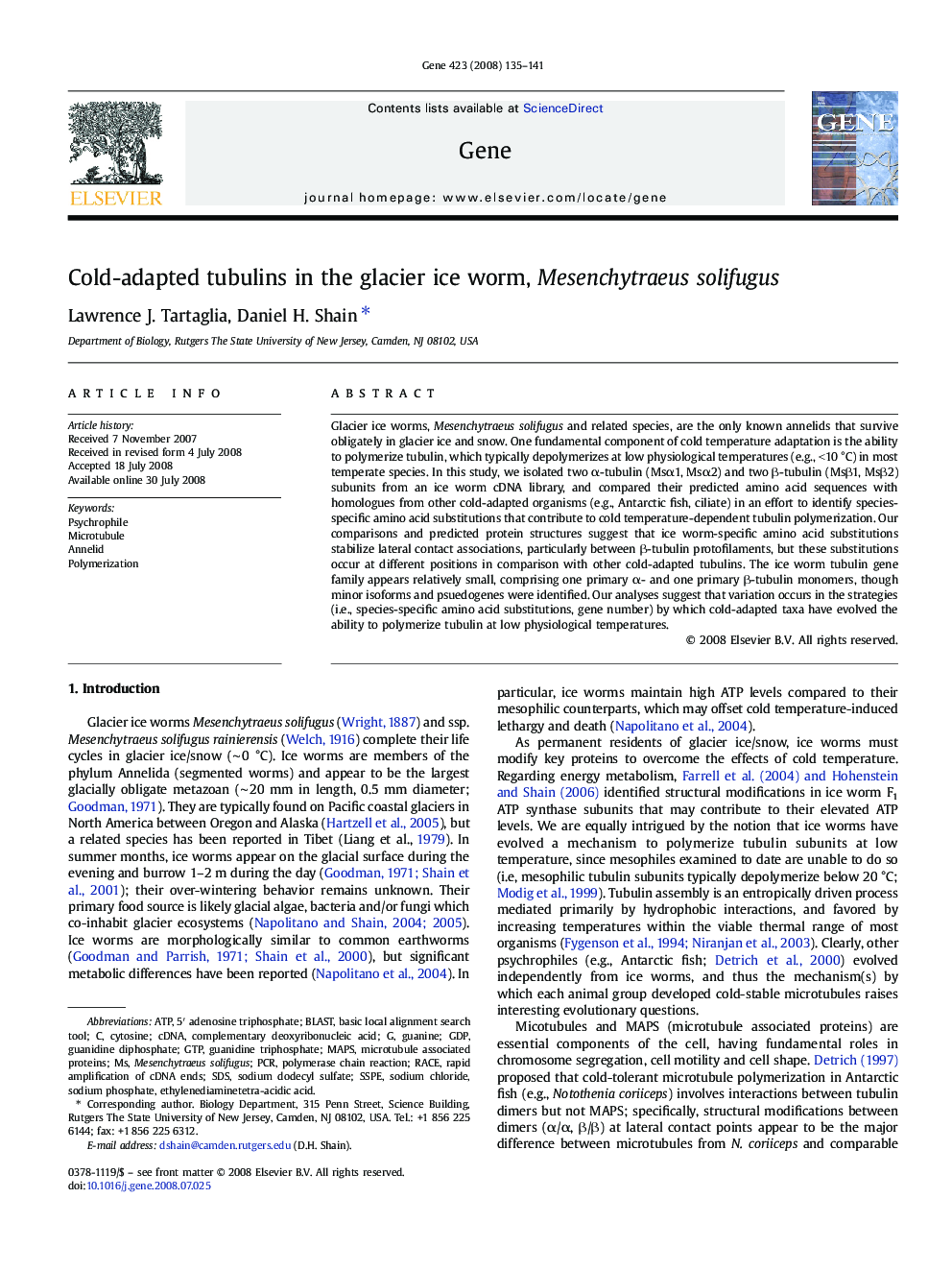| کد مقاله | کد نشریه | سال انتشار | مقاله انگلیسی | نسخه تمام متن |
|---|---|---|---|---|
| 2819123 | 1160112 | 2008 | 7 صفحه PDF | دانلود رایگان |

Glacier ice worms, Mesenchytraeus solifugus and related species, are the only known annelids that survive obligately in glacier ice and snow. One fundamental component of cold temperature adaptation is the ability to polymerize tubulin, which typically depolymerizes at low physiological temperatures (e.g., < 10 °C) in most temperate species. In this study, we isolated two α-tubulin (Msα1, Msα2) and two β-tubulin (Msβ1, Msβ2) subunits from an ice worm cDNA library, and compared their predicted amino acid sequences with homologues from other cold-adapted organisms (e.g., Antarctic fish, ciliate) in an effort to identify species-specific amino acid substitutions that contribute to cold temperature-dependent tubulin polymerization. Our comparisons and predicted protein structures suggest that ice worm-specific amino acid substitutions stabilize lateral contact associations, particularly between β-tubulin protofilaments, but these substitutions occur at different positions in comparison with other cold-adapted tubulins. The ice worm tubulin gene family appears relatively small, comprising one primary α- and one primary β-tubulin monomers, though minor isoforms and psuedogenes were identified. Our analyses suggest that variation occurs in the strategies (i.e., species-specific amino acid substitutions, gene number) by which cold-adapted taxa have evolved the ability to polymerize tubulin at low physiological temperatures.
Journal: Gene - Volume 423, Issue 2, 1 November 2008, Pages 135–141